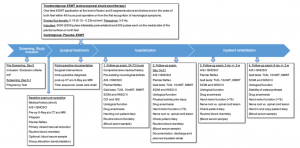The effect of extracorporeal shock wave therapy in acute traumatic spinal cord injury on motor and sensory function within 6 months post-injury: a study protocol for a two-arm three-stage adaptive, prospective, multi-center, randomized, blinded, placebo-controlled clinical trial
Leister et al., 2022.
Trials. 2022 Apr 1;23(1):245. doi: 10.1186/s13063-022-06161-8.
ParaMove, SCI Research Unit, BG Trauma Center Murnau, Murnau, Germany, and Paracelus Medical University, Salzburg, Austria.
AUVA Trauma Center Meidling, Kundratstr. 37, 1120, Vienna, Austria.
https://pubmed.ncbi.nlm.nih.gov/35365190/
Background: The pathological mechanism in acute spinal cord injury (SCI) is dual sequential: the primary mechanical lesion and the secondary injury due to a cascade of biochemical and pathological changes initiated by the primary lesion. Therapeutic approaches have focused on modulating the mechanisms of secondary injury. Despite extensive efforts in the treatment of SCI, there is yet no causal, curative treatment approach available. Extracorporeal shock wave therapy (ESWT) has been successfully implemented in clinical use. Biological responses to therapeutic shock waves include altered metabolic activity of various cell types due to direct and indirect mechanotransduction leading to improved migration, proliferation, chemotaxis, modulation of the inflammatory response, angiogenesis, and neovascularization, thus inducing rather a regeneration than repair. The aim of this clinical study is to investigate the effect of ESWT in humans within the first 48 h after an acute traumatic SCI, with the objective to intervene in the secondary injury phase in order to reduce the extent of neuronal loss.
Methods: This two-arm three-stage adaptive, prospective, multi-center, randomized, blinded, placebo-controlled study has been initiated in July 2020, and a total of 82 patients with acute traumatic SCI will be recruited for the first stage in 15 participating hospitals as part of a two-armed three-stage adaptive trial design. The focused ESWT (energy flux density: 0.1-0.19 mJ/mm2, frequency: 2-5 Hz) is applied once at the level of the lesion, five segments above/below, and on the plantar surface of both feet within the first 48 h after trauma. The degree of improvement in motor and sensory function after 6 months post-injury is the primary endpoint of the study. Secondary endpoints include routine blood chemistry parameters, the degree of spasticity, the ability to walk, urological function, quality of life, and the independence in everyday life.
Discussion: The application of ESWT activates the nervous tissue regeneration involving a multitude of various biochemical and cellular events and leads to a decreased neuronal loss. ESWT might contribute to an improvement in the treatment of acute traumatic SCI in future clinical use.
Trial registration: ClinicalTrials.gov NCT04474106. 1
Spark Wave Therapy
- Is non-invasive and safe.
- Improves cell migration and proliferation.
- Modulates the inflammatory response.
- Induces angiogenesis and neovascularization.
- Activates nervous tissue regeneration.
- Acts neuroprotective.
- Might reduce secondary pathologic mechanisms after primary spinal cord injury.
Reference:
Leister I, Mittermayr R, Mattiassich G, Aigner L, Haider T, Machegger L, Kindermann H, Grazer-Horacek A, Holfeld J, Schaden W. The effect of extracorporeal shock wave therapy in acute traumatic spinal cord injury on motor and sensory function within 6 months post-injury: a study protocol for a two-arm three-stage adaptive, prospective, multi-center, randomized, blinded, placebo-controlled clinical trial. Trials. 2022 Apr 1;23(1):245. doi: 10.1186/s13063-022-06161-8. PMID: 35365190; PMCID: PMC8973563.

